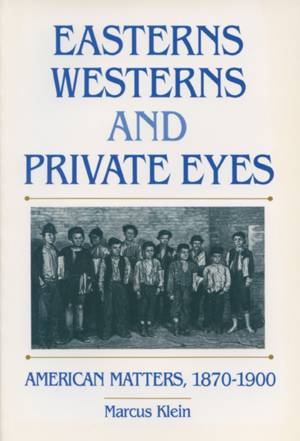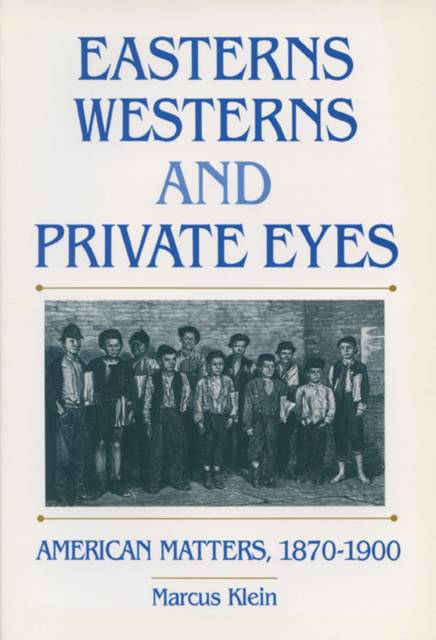
Je cadeautjes zeker op tijd in huis hebben voor de feestdagen? Kom langs in onze winkels en vind het perfecte geschenk!
- Afhalen na 1 uur in een winkel met voorraad
- Gratis thuislevering in België vanaf € 30
- Ruim aanbod met 7 miljoen producten
Je cadeautjes zeker op tijd in huis hebben voor de feestdagen? Kom langs in onze winkels en vind het perfecte geschenk!
- Afhalen na 1 uur in een winkel met voorraad
- Gratis thuislevering in België vanaf € 30
- Ruim aanbod met 7 miljoen producten
Zoeken
Omschrijving
In Easterns, Westerns, and Private Eyes, Marcus Klein explores the sources and accumulated meanings of certain tales and figures that have dominated the American imagination: the Horatio Alger story, the western, and the figure of the private eye. With their distinguishing locales, costumes, and gestures, they emerged in the late nineteenth century as a response to massive immigration, the great expansion of industry and commerce, and the crowding of the cities. Klein argues that these figures appear so frequently and continuously in American expression, both high and low, as to constitute a definition of American culture. Klein recovers originating impulses within these tales by examining a broad range of documents, including nickel and dime novels as well as specimens of "high" literature, police and detective memoirs, rogues' galleries, cowboy memoirs, nineteenth-century child and welfare studies, and old guides to the city. Discovered in the detail of their historical context, the source tales are surprisingly sophisticated, witty, and frequently cynical and ironic. Indeed, Klein points out, these stories simultaneously interrogate and integrate the national pieties embodied in their fictional figures. Whatever yearnings the rags-to-riches story, the detective novel, and the Western fulfilled in their day, they are still endlessly repeated--in books, in the movies, on television every evening. In their beginnings these tales are open-ended, Klein contends, and they endure because they are still teasing and unfinished.
Specificaties
Betrokkenen
- Auteur(s):
- Uitgeverij:
Inhoud
- Aantal bladzijden:
- 232
- Taal:
- Engels
- Reeks:
Eigenschappen
- Productcode (EAN):
- 9780299143046
- Verschijningsdatum:
- 15/09/1994
- Uitvoering:
- Paperback
- Formaat:
- Trade paperback (VS)
- Afmetingen:
- 155 mm x 230 mm
- Gewicht:
- 322 g

Alleen bij Standaard Boekhandel
+ 37 punten op je klantenkaart van Standaard Boekhandel
Beoordelingen
We publiceren alleen reviews die voldoen aan de voorwaarden voor reviews. Bekijk onze voorwaarden voor reviews.









